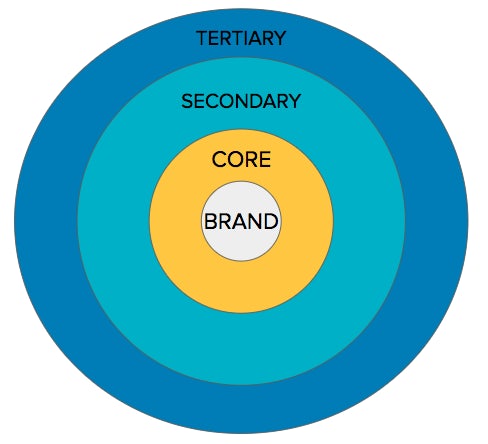The days of placing random links and benefitting from their SEO value are way behind us.
Today, SEO and PR are much more closely aligned, where the links we gain to our websites are often derived from PR techniques – delivering on KPIs that go well beyond just links and into engagement, awareness and loyalty.
The main challenge of link building in this way is to create the topical relevance for it to make sense for your client/your business to talk about it. There are plenty of opportunities out there to get coverage but if it doesn’t make sense – if it’s not relevant to you or your brand – you’re not going to get SEO or PR value.
What it means to be the ‘credible source’
Becoming the ‘credible source’ is an essential part of any link acquisition campaign.
But what does that mean?
It’s all about being the authority on a subject. If you’re expecting your audience to believe what you have to say and buy into it, you have to give them good reason. It’s the difference between me as an SEO and PR consultant trying to build links to the Impression site by talking about how to grow tomatoes, when actually I’m much better placed to talk search engine optimisation or public relations.
The credible source theory stands true, whether you’re an individual looking to build your personal profile, or a business. Typically, PR coverage focuses on a person/person within the business, or the brand itself. So the person or the brand need to be credible in that topic area.
Identifying your topic focus
To become the ‘credible source’, you’ll need to identify your topic focus. I like to visualise this in the form of a target:

At the CORE are the topics which relate specifically to your brand, and which are the areas which are most closely aligned with your niche expertise. So for Impression, our core topics would be SEO, PPC, digital PR and web development, for example.
On the SECONDARY level are those things which we know about, but which are less closely tied to our specific knowledge. For Impression, these might be offline marketing, branding and business growth.
On the TERTIARY level are those things which are least closely related to our brand knowledge, but still relevant to us. In our case, this might be graduate recruitment, HR advice, office design and anything on the topic of Nottingham or London (our office locations).
The size of the circles represented in the above graphic represent the size of the opportunity. Hopefully, you can see how the further we get from the core, the wider the appeal or range of potential opportunities. Essentially, there are more people talking about broader business topics as in the tertiary level for us, and fewer about our core topics.
So the first step to becoming a credible source is to identify what topics fit into each of these circles for you.
Some further tips to help you with this:
- Use landing page data combined with Search Console queries to identify the topics people already find you for
- Try to tie this into business goals – your topic should represent things that are always relevant to your business aspirations in some way
- Consider the different experts within your business; you might have an individual representative whose sphere of knowledge is quite different to another, but still just as relevant to the business, so you could end up with a separate list of topics for one person than you have for the overall brand – this relates specifically to having a spokesperson in your business
Creating credibility
Whatever your chosen topics of focus, you need to ensure you create credibility around those topics if you are to gain PR coverage or links.
That means asking yourself what qualifies you/your business to speak on that matter, and ensuring that is well represented across your online profile and the way you speak about yourself/your brand.
For Impression, the core focus is on digital marketing, and it’s fairly easy to see why; we’re a digital marketing agency. So it makes perfect sense that that’s something we talk about.
That’s not all though. We’re very proud of the range of awards we’ve picked up along the way and the testimonials and reviews our clients leave us. These things help to differentiate us from other digital marketing experts and add trust in us as a credible source of information on this topic.
For your business, consider your core topic first; how well do you represent your brand/self as a credible source on this topic? What more can you add to this to help build credibility?
Indeed, across all levels, you need to have a good reason to be talking on that topic.
Building credibility
Some other things to think about when it comes to building credibility for yourself or your brand include:
SEO and content
SEO is essential in building credibility.
Search for terms like ‘SEO agency’ and you’ll see Impression sits in the top position – which gives us credibility in this topic. This visibility has come as a result of a lot of hard work in creating vast amount of great quality content on the topic of SEO, and it’s this that also helps us stand apart from other potential credible sources.
Consider how to use this technique for your own brand. Does your website best represent your expertise and does your resulting visibility in the SERPs support that? If the journalist was to Google your topic of expertise, would you be visible?
Of course, it’s likely you’re using PR and link acquisition techniques to grow your visibility, but at the very minimum, you need to have the topics of focus at least covered on your website, even if you’re not ranking #1 just yet.
Offline profile building
Offline plays a role here; look for opportunities to speak at high profile events in your industry, to talk on the radio, to share your knowledge across all marketing channels therefore making a name for yourself/brand as an authority.
If people start to know your name, it’s much more likely you’ll be accepted as a credible source.
Trust signals
Things like reviews, testimonials, case studies, all help you to build that picture of you/your brand as a credible source on your chosen topic, and should be used as part of your overall marketing strategy, too.
Relevant domains vs relevant topics
It’s common for any talk of link building to be accompanied by chat around the relevance of domains. As is the basic idea of link building, each link is a vote for us but in the same way that my mum telling you I’m a great marketer is not as persuasive as the Chartered Institute of Marketing telling you I’m a great marketer, the links we gain are also assessed according to their relevance and value.
That means we need to be looking to feature on those websites relevant to our topic focus.
At its most basic level, that’s how Google builds a picture of the online communities or neighbourhoods in which we operate. Through link networks, it sees that Impression is closely related to digital marketing publications, digital marketing tools and even other digital marketing agencies (we’re never afraid to link out to competitors or similar businesses in our niche for this very reason).
From a pure business perspective, though, it’s unlikely you’re going to be trying to sell to those people in your niche already – we’re not going to get much business from selling SEO to another SEO agency, for example. It therefore makes logical sense that we would also be talking to businesses in sectors outside of ours, in the other verticals we serve, and that our link acquisition targets would therefore also feature what could be considered irrelevant websites – and that’s where the relevant domain vs relevant topic comes in.
Let’s say your business makes unified communications platforms, much like our client, VIA. Their core topic area of focus is therefore around unified communications, cloud technology and telephony. But their target websites aren’t just those in those areas. Indeed, over the past few months, we’ve placed our client in a wide range of publications related not to their topic focus, but their vertical focus.
Because they sell to businesses in sectors like finance, education and transport, we’ve created target lists of publications relevant to those areas. The overall relevance therefore comes back to the topic of content we place there. By seeding a comment on the impact of cloud technology on the latest finance industry regulation updates in publications like Finance Monthly, we still use topic relevance to make the link itself highly relevant, too.
The additional benefit to this balance of domain relevance and topic relevance is that wherever we’re getting our client featured, they are delivering a compelling message to a relevant audience, and are therefore far more likely to see referral traffic and conversions from that link than if we’d simply followed basic link building techniques.
Proximity to conversion
Each layer of our topic target represents a different opportunity. As mentioned above, those topics which are further from our core typically have more potential for mass appeal, while those closer to the core are much more focused to our brand.
We can consider this as above, but with an extra component: brand:

Here, we see that brand sits at the very centre, where each topic level takes us further away from that brand.
Now consider the user journey. If we appeal to an audience at the tertiary level, they are three steps away from our brand – and are therefore at least three steps away from being ready to convert (i.e. buy from us).
So if Impression was featured in an article talking about office design (we’ve got a very cool office!), there might be a lot of people see that, but the chances of them then deciding to buy our digital marketing services are pretty minimal.
On the other hand, if an audience came to us through a feature or piece of content where we showed our expertise on the topic of SEO, the chances of that person then deciding to buy our digital marketing services are much greater.
This works for lead gen, ecommerce, B2B, B2C, larger businesses, smaller businesses… consider the topic relevance for your business and the proximity to conversion as ways to prioritise your link acquisition campaigns. If you sell bean bags and talk about bean bags on home improvement sites, you’re more likely to make a sale than if you talked about evolving manufacturing techniques in the textiles industry – though both would be relevant to your brand.
How to use this information in your PR and link acquisition campaigns
If you’re investing in PR, content and link acquisition campaigns, you can use the credible source model to ensure maximum success and relevance. As Google continues to evolve its own algorithms – especially through machine learning – the amount brands can ‘get away with’ irrelevant or poor quality links is reducing.
If you want to succeed not just today but tomorrow too, you need to build links that are relevant either in domain or topic – which is best achieved when you/your brand makes itself the credible source.



